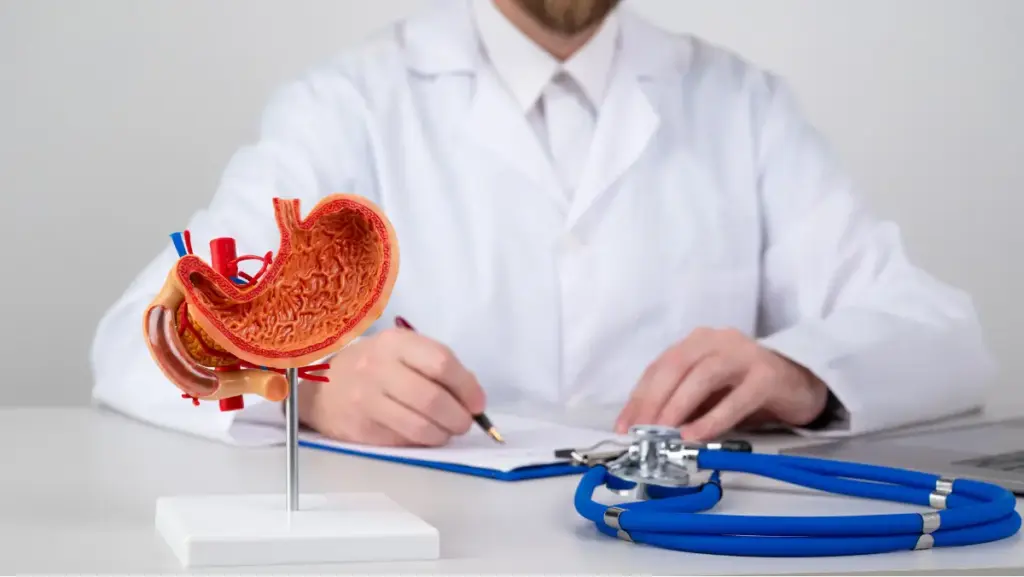
The wrist is an intricate joint that connects the hand to the forearm, enabling a wide range of precise movements essential for daily function. Comprising eight small carpal bones aligned in two rows, along with multiple tendons, ligaments, and nerves, the wrist facilitates everything from gripping to fine motor skills. Given its constant use in activities such as typing, lifting, or writing, the wrist is particularly susceptible to injuries and repetitive strain disorders. Conditions like carpal tunnel syndrome, tendonitis, and fractures are among the most frequently encountered problems in orthopaedics.
If not addressed promptly, wrist disorders can impair hand function and compromise quality of life. With advancements in diagnostic imaging and minimally invasive procedures, most wrist conditions are now managed effectively, restoring mobility and reducing pain. A detailed understanding of wrist anatomy and pathology is essential for early intervention and targeted treatment, which significantly improves long-term outcomes for patients.
The wrist is a complex synovial joint formed where the distal ends of the radius and ulna meet the carpal bones of the hand. It is stabilized by a network of ligaments and powered by tendons that originate in the forearm.
Key Components:
The wrist allows multiple movements including:
Due to its mechanical and functional complexity, any disruption to this joint—whether through trauma or overuse—can result in significant impairment. Early diagnosis and understanding of the anatomical layout are crucial for both prevention and recovery. Specialists often rely on imaging techniques such as X-rays, MRIs, and ultrasound to assess structural integrity and identify abnormalities.
Carpal Tunnel Syndrome (CTS) is one of the most common nerve compression disorders affecting the wrist. It occurs when the median nerve, which travels through the carpal tunnel, becomes compressed due to swelling or inflammation.
Symptoms Include:
Risk Factors:
Treatment Approaches:
Left untreated, CTS can lead to permanent nerve damage and muscle atrophy. Diagnosis is typically confirmed through clinical exams and nerve conduction studies. Early intervention greatly enhances recovery, and modern surgical techniques allow for reduced downtime and faster healing. With proper ergonomics and preventive care, recurrence rates can also be minimized.
Wrist sprains and fractures often result from falls onto an outstretched hand. These injuries range from mild ligament overstretching to complete bone breaks and require prompt attention to avoid long-term dysfunction.
Types of Wrist Fractures:
Sprain Classifications:
Symptoms May Include:
Management Options:
Accurate diagnosis using X-rays or MRI is vital to differentiate between sprains and fractures. Inadequate treatment can lead to chronic instability or reduced wrist function. Proper rehabilitation ensures full recovery and minimizes complications such as stiffness or post-traumatic arthritis.
Tendonitis in the wrist arises when tendons become inflamed due to repetitive strain, overuse, or sudden trauma. It often affects individuals whose occupations or activities involve repetitive wrist movements, such as athletes, office workers, or manual laborers.
Common Conditions:
Typical Symptoms:
Treatment Protocols:
Ignoring tendonitis can lead to tendon degeneration and rupture. Early recognition and modification of contributing activities are crucial to avoid chronic injury. Stretching routines and ergonomic adjustments help prevent recurrence. Comprehensive rehabilitation focuses on restoring strength, reducing inflammation, and gradually reintroducing load-bearing activities.
Wrist arthroscopy is a minimally invasive surgical procedure used to diagnose and treat a variety of joint issues. Using a small camera (arthroscope), surgeons can view internal wrist structures and perform repairs without the need for large incisions.
Indications for Arthroscopy:
Advantages of Wrist Arthroscopy:
Surgical Procedures May Include:
Postoperative Care:
Wrist surgery is typically considered when conservative treatments fail. High-resolution imaging and real-time arthroscopic visuals allow for accurate and targeted interventions. With skilled surgical execution and adherence to postoperative protocols, most patients regain substantial wrist function and experience lasting pain relief.
Recovery from wrist conditions, especially post-surgery or after severe injury, involves a structured rehabilitation plan tailored to individual needs. Occupational therapy plays a vital role in regaining strength, flexibility, and functional use of the hand and wrist.
Key Goals of Therapy:
Common Rehabilitation Techniques:
Stages of Recovery:
Monitoring & Progress:
Timely rehabilitation can significantly impact long-term wrist performance. Delayed or inadequate therapy may lead to stiffness, weakness, or re-injury. A multidisciplinary approach—combining physician oversight, physiotherapy, and occupational guidance—ensures optimal outcomes and a smoother transition back to routine activities.
The wrist is a small yet vital structure, central to hand function and overall upper limb mobility. Its intricate anatomy makes it susceptible to a variety of disorders, from mild sprains to complex degenerative conditions. Timely diagnosis, supported by imaging and clinical assessment, allows for personalized treatment—whether through conservative management or advanced surgical interventions. Rehabilitation plays an equally important role in restoring motion and preventing long-term complications.
At Kannappa Memorial Hospital, we combine expert evaluation with cutting-edge treatment protocols to deliver comprehensive wrist care. Every case is approached with precision, empathy, and evidence-based medicine to ensure optimal recovery and sustained comfort. Choosing the right care pathway can make all the difference in quality of life, independence, and productivity.
The wrist is an intricate joint that connects the hand to the forearm, enabling a wide range of precise movements essential for daily function. Comprising eight small carpal bones aligned in two rows, along with multiple tendons, ligaments, and nerves, the wrist facilitates everything from gripping to fine motor skills. Given its constant use in activities such as typing, lifting, or writing, the wrist is particularly susceptible to injuries and repetitive strain disorders. Conditions like carpal tunnel syndrome, tendonitis, and fractures are among the most frequently encountered problems in orthopaedics.
If not addressed promptly, wrist disorders can impair hand function and compromise quality of life. With advancements in diagnostic imaging and minimally invasive procedures, most wrist conditions are now managed effectively, restoring mobility and reducing pain. A detailed understanding of wrist anatomy and pathology is essential for early intervention and targeted treatment, which significantly improves long-term outcomes for patients.
Wrist Anatomy Overview
Carpal Tunnel Syndrome
Wrist Sprains & Fractures
Tendonitis & Overuse Injuries
Wrist Arthroscopy & Surgical Options
Recovery & Occupational Therapy
Conclusion
The wrist is a complex synovial joint formed where the distal ends of the radius and ulna meet the carpal bones of the hand. It is stabilized by a network of ligaments and powered by tendons that originate in the forearm.
Key Components:
The wrist allows multiple movements including:
Due to its mechanical and functional complexity, any disruption to this joint—whether through trauma or overuse—can result in significant impairment. Early diagnosis and understanding of the anatomical layout are crucial for both prevention and recovery. Specialists often rely on imaging techniques such as X-rays, MRIs, and ultrasound to assess structural integrity and identify abnormalities.
Carpal Tunnel Syndrome (CTS) is one of the most common nerve compression disorders affecting the wrist. It occurs when the median nerve, which travels through the carpal tunnel, becomes compressed due to swelling or inflammation.
Symptoms Include:
Risk Factors:
Treatment Approaches:
Left untreated, CTS can lead to permanent nerve damage and muscle atrophy. Diagnosis is typically confirmed through clinical exams and nerve conduction studies. Early intervention greatly enhances recovery, and modern surgical techniques allow for reduced downtime and faster healing. With proper ergonomics and preventive care, recurrence rates can also be minimized.
Wrist sprains and fractures often result from falls onto an outstretched hand. These injuries range from mild ligament overstretching to complete bone breaks and require prompt attention to avoid long-term dysfunction.
Types of Wrist Fractures:
Sprain Classifications:
Symptoms May Include:
Management Options:
Accurate diagnosis using X-rays or MRI is vital to differentiate between sprains and fractures. Inadequate treatment can lead to chronic instability or reduced wrist function. Proper rehabilitation ensures full recovery and minimizes complications such as stiffness or post-traumatic arthritis.
Tendonitis in the wrist arises when tendons become inflamed due to repetitive strain, overuse, or sudden trauma. It often affects individuals whose occupations or activities involve repetitive wrist movements, such as athletes, office workers, or manual laborers.
Common Conditions:
Typical Symptoms:
Treatment Protocols:
Ignoring tendonitis can lead to tendon degeneration and rupture. Early recognition and modification of contributing activities are crucial to avoid chronic injury. Stretching routines and ergonomic adjustments help prevent recurrence. Comprehensive rehabilitation focuses on restoring strength, reducing inflammation, and gradually reintroducing load-bearing activities.
Wrist arthroscopy is a minimally invasive surgical procedure used to diagnose and treat a variety of joint issues. Using a small camera (arthroscope), surgeons can view internal wrist structures and perform repairs without the need for large incisions.
Indications for Arthroscopy:
Advantages of Wrist Arthroscopy:
Surgical Procedures May Include:
Postoperative Care:
Wrist surgery is typically considered when conservative treatments fail. High-resolution imaging and real-time arthroscopic visuals allow for accurate and targeted interventions. With skilled surgical execution and adherence to postoperative protocols, most patients regain substantial wrist function and experience lasting pain relief.
Recovery from wrist conditions, especially post-surgery or after severe injury, involves a structured rehabilitation plan tailored to individual needs. Occupational therapy plays a vital role in regaining strength, flexibility, and functional use of the hand and wrist.
Key Goals of Therapy:
Common Rehabilitation Techniques:
Stages of Recovery:
Monitoring & Progress:
Timely rehabilitation can significantly impact long-term wrist performance. Delayed or inadequate therapy may lead to stiffness, weakness, or re-injury. A multidisciplinary approach—combining physician oversight, physiotherapy, and occupational guidance—ensures optimal outcomes and a smoother transition back to routine activities.
The wrist is a small yet vital structure, central to hand function and overall upper limb mobility. Its intricate anatomy makes it susceptible to a variety of disorders, from mild sprains to complex degenerative conditions. Timely diagnosis, supported by imaging and clinical assessment, allows for personalized treatment—whether through conservative management or advanced surgical interventions. Rehabilitation plays an equally important role in restoring motion and preventing long-term complications.
At Kannappa Memorial Hospital, we combine expert evaluation with cutting-edge treatment protocols to deliver comprehensive wrist care. Every case is approached with precision, empathy, and evidence-based medicine to ensure optimal recovery and sustained comfort. Choosing the right care pathway can make all the difference in quality of life, independence, and productivity.






Wrist pain can often be relieved by resting the joint, applying ice, and using a wrist brace to limit movement. Over-the-counter anti-inflammatory medications may help reduce swelling and discomfort. Stretching exercises and ergonomic changes can prevent further irritation. If symptoms persist or worsen, it’s important to consult a specialist for imaging and targeted intervention to rule out underlying issues such as nerve compression or fractures.
Nonsteroidal anti-inflammatory drugs (NSAIDs) like ibuprofen or naproxen are commonly used to treat wrist pain caused by inflammation or overuse. In some cases, corticosteroid injections may be recommended for more severe pain or persistent swelling. Topical analgesics can also offer localized relief. However, medication should be used under medical guidance to avoid masking serious conditions or causing side effects over time.
Gentle massage can improve blood flow and reduce stiffness after a wrist injury, but it should be performed with caution. Start with light circular motions around the area using your fingertips or a soft cloth. Avoid applying pressure directly on painful or swollen spots. Massaging should never replace medical care and should be postponed in the case of acute injuries like fractures or ligament tears until cleared by a physician.
Deficiencies in vitamin D, calcium, or magnesium may contribute to bone weakness and joint pain, including the wrist. A lack of vitamin B6 or B12 can also lead to nerve-related discomfort, such as tingling or numbness. It’s advisable to consult a healthcare provider for appropriate blood tests to identify nutritional deficiencies and consider supplementation based on medical advice to restore musculoskeletal health.
Copyright ©2025 Kannappa Memorial Hospital. All Rights Reserved
© Designed and Developed By Cloudstar Digital